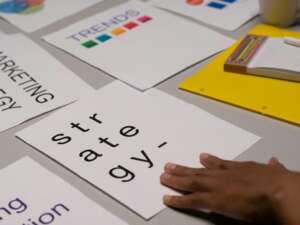Have you ever wondered why customers sometimes make seemingly irrational decisions? The answer lies in behavioral economics, a fascinating field that bridges psychology and business decision-making. In this comprehensive guide, we’ll explore how behavioral economics in business can transform your understanding of customer behavior and help you make better strategic decisions.
Table of Contents
- What is Behavioral Economics in Business?
- Key Principles of Behavioral Economics
- Impact on Consumer Behavior
- Practical Business Applications
- Case Studies and Success Stories
- Implementation Tools and Resources
- Improving Team Decision-Making
What is Behavioral Economics in Business?
Behavioral Economics in Business is the study of how real human behavior impacts economic decisions within business settings. Unlike traditional economics, which assumes that people always make logical decisions to maximize their own self-interest, behavioral economics recognizes that people are often influenced by psychological, emotional, and social factors.
For example, in business, customers might make impulsive purchases due to emotions like excitement or fear of missing out, rather than carefully weighing the pros and cons. Similarly, employees might resist change due to fear or uncertainty, even if it’s beneficial for the company. Behavioral economics helps businesses understand these patterns, making it possible to predict and shape decision-making in areas like marketing, sales, and management.
“Traditional economics is built on the assumption of rationality. Behavioral economics shows us that humans are predictably irrational – and this insight is worth its weight in gold for businesses.” – Dan Ariely, Behavioral Economist
Key Principles of Behavioral Economics
1. Loss Aversion
People feel the pain of losses more intensely than the pleasure of equivalent gains. This fundamental principle explains why:
- Free trial periods work so effectively
- Money-back guarantees boost sales
- Customers hold onto underperforming investments
2. Anchoring Effect
The first piece of information people receive serves as a reference point for all subsequent decisions. Smart businesses use this by:
- Presenting premium options first
- Showing original prices alongside discounted ones
- Structuring price tiers strategically
3. Social Proof
Humans naturally look to others for cues about correct behavior. Successful applications include:
- Customer testimonials
- User reviews
- “Most Popular” labels
- Social media share counts
Impact on Consumer Behavior
Behavioral economics significantly shapes how consumers make purchasing decisions. By understanding these patterns, businesses can more effectively influence consumer behavior in three key areas:
1. Frame Choices Effectively
- What It Means: How choices are presented can influence consumer decisions. The way options are framed can make certain products or services appear more appealing.
- How to Apply It:
- Position Products to Highlight Benefits: Emphasize the benefits of a product clearly, making it the focal point of decision-making.
- Structure Pricing to Guide Decisions: Use pricing strategies, like anchoring, where a higher initial price is shown next to a discounted one, making the discount more attractive.
- Design Compelling Calls-to-Action (CTAs): Create clear, direct, and motivating CTAs that drive consumers toward immediate action.
2. Optimize Decision Architecture
- What It Means: The design of the decision-making environment can either simplify or complicate consumer choices. Effective decision architecture helps guide consumers toward desired actions.
- How to Apply It:
- Simplify Complex Choices: Break down complex decisions into simple, easy-to-understand steps to prevent overwhelm.
- Remove Friction Points: Identify and eliminate barriers that prevent consumers from completing a purchase, such as lengthy forms or confusing navigation.
- Guide Users Through Decision Funnels: Design clear, step-by-step decision funnels that lead consumers smoothly from product exploration to purchase.
3. Leverage Cognitive Biases
- What It Means: Cognitive biases are predictable ways in which consumers make irrational decisions. By strategically leveraging these biases, businesses can encourage desired behaviors.
- How to Apply It:
- Present Information Strategically: Use techniques like scarcity (e.g., “Only 3 left in stock”) or social proof (e.g., “100 people bought this today”) to make products more appealing.
- Time Promotions Effectively: Align promotions with times when consumers are most likely to buy, such as paydays or the end of a workweek.
- Create Urgency Appropriately: Use limited-time offers or flash sales to encourage immediate action, tapping into consumers’ fear of missing out (FOMO).
Practical Business Applications
Marketing Strategy
- Use scarcity messaging thoughtfully
- Implement social proof effectively
- Frame value propositions strategically
Pricing Optimization
- Structure tiered pricing effectively
- Position premium options strategically
- Use anchoring to guide perceptions
Product Development
- Design features based on user psychology
- Create sticky habits
- Build in social elements
Case Studies and Success Stories
Netflix: The Power of Default Options
Netflix’s auto-play feature leverages the status quo bias, making continued watching the default choice. This simple implementation of behavioral economics principles significantly increases viewing time and subscriber retention.
Amazon: Prime’s Subscription Psychology
Amazon Prime’s annual subscription model uses:
- Loss aversion (free shipping feels like a loss if not used)
- Sunk cost fallacy (maximizing subscription value)
- Choice architecture (making Prime the obvious choice)
Uber: Dynamic Pricing Psychology
Uber’s surge pricing leverages:
- Scarcity principles
- Loss aversion
- Time-sensitive decision making
Implementation Tools and Resources
Analytics Tools
- Behavioral Analytics Platform
- Decision Mapping Software
- Customer Journey Analyzer
Learning Resources
- Behavioral Economics Certification
- Decision Psychology Course
- Consumer Behavior Workshop
*Note: Some links above are affiliate links. We may earn a commission if you make a purchase.
Improving Team Decision-Making
Behavioral economics can be effectively applied to improve how teams make decisions, focusing on three key areas:
1. De-Bias Decision Processes
- What It Means: People often make decisions based on biases, which can lead to errors in judgment. Behavioral economics helps identify and minimize these biases, making team decisions more rational and effective.
- How to Apply It:
- Use Structured Decision Frameworks: Implement clear steps and criteria for making decisions, reducing the influence of personal biases.
- Implement Pre-Mortems: Before implementing a decision, ask the team to imagine why it might fail and brainstorm ways to prevent those issues.
- Encourage Diverse Perspectives: Involve team members with different viewpoints to challenge assumptions and broaden the decision-making process.
2. Optimize Meeting Structures
- What It Means: The way meetings are structured can impact the quality of team decisions. Effective presentation of information, timing, and framing can enhance decision outcomes.
- How to Apply It:
- Present Information Effectively: Use clear, concise, and visually appealing formats to ensure everyone understands key information.
- Time Decisions Appropriately: Align decisions with optimal times for decision-making, such as when team members are most alert and engaged.
- Frame Choices Productively: Present options in ways that highlight potential benefits and avoid overwhelming the team with too many choices.
3. Build Better Habits
- What It Means: Establishing good decision-making habits can improve team performance over the long term by creating an environment that supports effective choices.
- How to Apply It:
- Create Supportive Environments: Design spaces and workflows that make it easier for teams to focus and collaborate.
- Design Effective Defaults: Set default options that are aligned with team goals, making the right decisions the easiest to choose.
- Establish Helpful Routines: Develop regular routines, such as decision checklists or reflection sessions, to reinforce positive decision-making habits.
Conclusion
Behavioral economics in business offers powerful insights into decision-making psychology. By understanding and applying these principles, organizations can:
- Make better strategic decisions
- Design more effective products
- Create more compelling marketing
- Build stronger customer relationships
The key is to apply these insights ethically and thoughtfully, always keeping customer welfare in mind while pursuing business objectives.
Your Next Steps
- Audit your current business practices through a behavioral economics lens
- Identify opportunities to apply these principles
- Test and measure the impact of behavioral interventions
- Share your experiences in the comments below
Disclaimer: This post contains affiliate links. We may receive a commission for purchases made through these links.
Tags: #BehavioralEconomics #BusinessPsychology #DecisionMaking #ConsumerBehavior #MarketingStrategy




